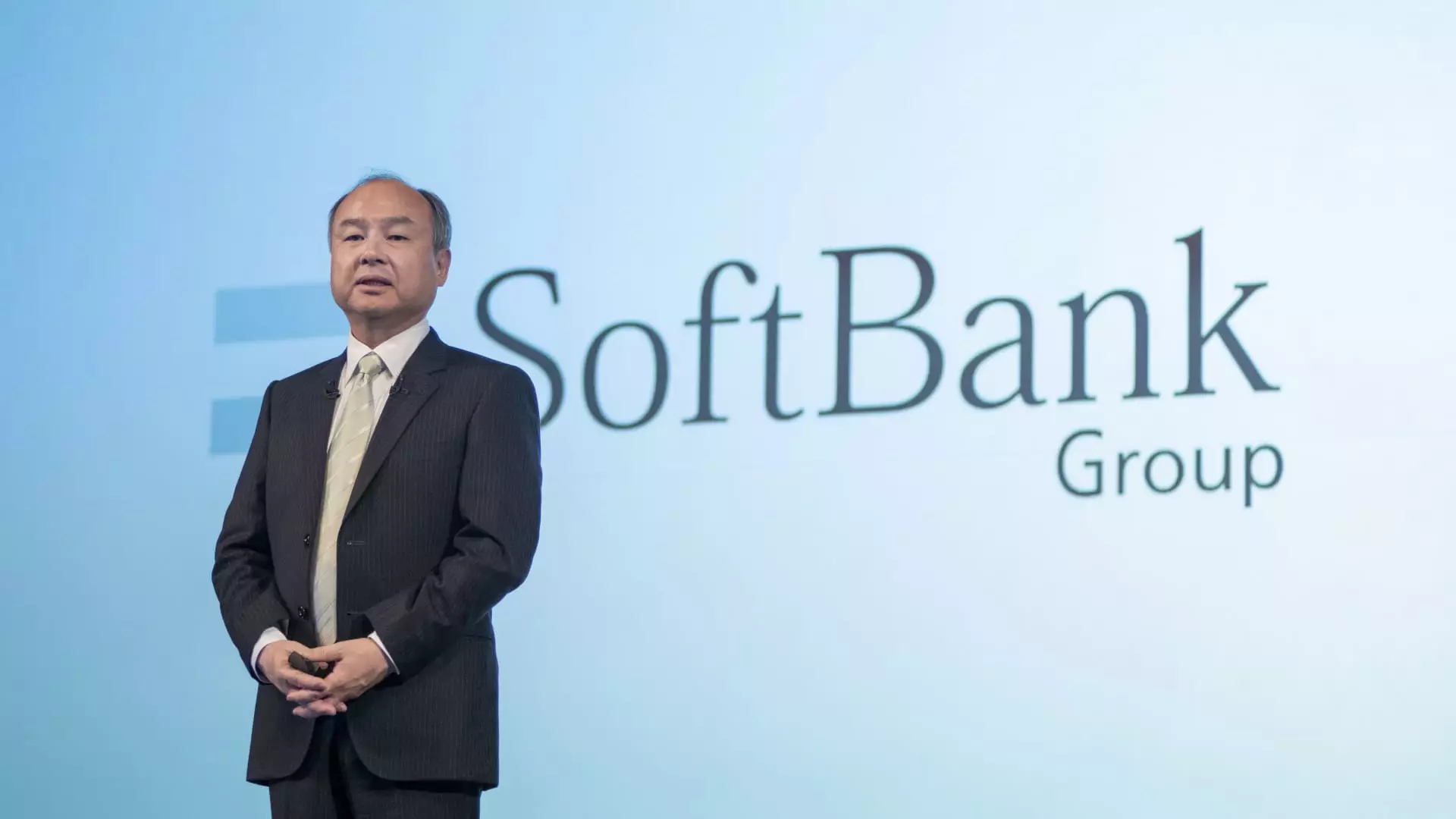The financial realm, especially concerning investment firms, is often characterized by fluctuating fortunes that can bewilder analysts and investors alike. One prominent player in this arena is SoftBank, a Japanese telecommunications and investment conglomerate, which recently reported dramatic financial results from its Vision Fund for the second quarter of the fiscal year. The figures reveal a dual narrative: a significant rebound from previous losses and the looming challenges presented by an ever-changing market.
Rebounding from Losses
In its latest financial report, SoftBank announced an impressive gain of 608.5 billion yen (approximately $3.96 billion) from its Vision Fund arm during the fiscal second quarter that concluded on September 30. This recovery is marked by a stark contrast to the preceding quarter when the company faced a substantial loss. The Vision Fund’s overall performance—factoring in both investment and operational aspects—showed a gain of 373.1 billion yen after a loss of 204.3 billion yen recorded in the previous quarter. Such a turnaround supports the notion that the volatility seen in financial markets can often yield unexpected recoveries.
The primary catalysts for this resurgence were enhanced valuations of several key investments within SoftBank’s portfolio. Notable contributors to these gains include the e-commerce giant Coupang, the Chinese ride-hailing service Didi Global, and the increasingly profitable ByteDance. Each of these companies experienced a surge in their valuations, underscoring the volatile nature of tech investments where market sentiment can rapidly influence the worth of stocks.
However, the overall outlook of the Vision Fund reveals a contrasting narrative. While SoftBank rode a wave of gains brought about by its investments, its Vision Fund 2 segment reported a net loss of 232.6 billion yen. This area suffered due to declines in share prices for several companies, including the Norwegian robotics innovator AutoStore and the U.S. automation firm Symbotic. These fluctuations raise important questions about the sustainability of SoftBank’s investment strategy, suggesting that while some investments may soar, others could plunge, resulting in a mixed bag for the conglomerate.
Investors in technology companies often experience extreme highs and lows, highlighting the risks inherent in the sector. As high-profile companies like Nvidia thrive in the AI space, others are not guaranteed the same fortune, reinforcing apprehensions regarding future investments.
The AI Boom and Strategic Investments
A key aspect of SoftBank’s recent maneuvering involves its strategic positioning amid the artificial intelligence (AI) boom. The Vision Fund has been capitalizing on this burgeoning sector, particularly evidenced by its involvement in the September 2023 listing of Arm Holdings, a move that demonstrates SoftBank’s focus on AI-driven technology. Masayoshi Son, the visionary leader of SoftBank, has expressed optimism for AI advancements, even suggesting the potential for machines to evolve into entities “10,000 times smarter than humans.” Such a prophetic statement not only reflects Son’s ambitious vision but also embodies the volatile excitement that accompanies tech investments.
Moreover, the reported commitment of SoftBank to invest $500 million in OpenAI accentuates its intent to be at the forefront of AI innovations. This emphasis on AI comes amidst growing interest in the technology, which has rapidly gained traction among both investors and the public, further underlining the urgency for firms to establish a foothold in this competitive landscape.
Despite the promising gains and strategic investments, SoftBank is not without its challenges. The company has garnered attention from activist investors, notably Elliott Management, which has sought significant changes to SoftBank’s capital allocation strategies, including a notable push for a $15 billion share buyback. In response, SoftBank has already initiated a plan to repurchase approximately 6.8% of its shares, indicating an awareness of the pressure to appease investors.
Furthermore, the broader Japanese market dynamics present additional hurdles. The economic landscape is still relatively volatile, with potential for continued fluctuations due to varying factors, including wage growth and impending interest rate changes. Analysts are wary of the implications of these factors, cautioned by the likelihood that economic instability could persist in the foreseeable future.
SoftBank’s Vision Fund presents a fascinating case study in investment dynamics, showcasing how quickly fortunes can shift. While the recent financial results signify a recovery from significant losses, the mixed performance across its sectors, coupled with broader economic uncertainties, imposes a cautious outlook. As SoftBank navigates the complexities of the tech investment landscape and the AI wave, its ability to adapt and respond strategically to both opportunities and challenges will be pivotal in securing its position as a leading player in the global market.

